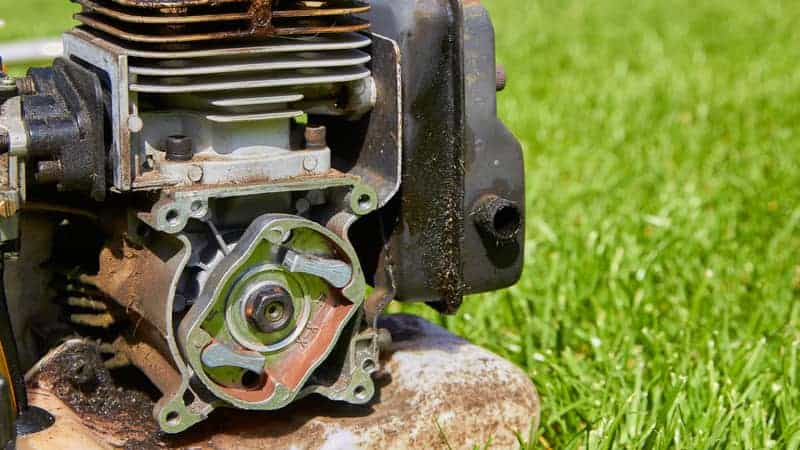Peace lilies aren’t just another pretty face in the world of indoor plants. They’re a symbol of longevity, purity and resilience. Well-known for their lush, dark green leaves and striking white blooms, peace lilies are a favourite for both...
Peace lilies aren’t just another pretty face in the world of indoor plants.
They’re a symbol of longevity, purity and resilience.
Well-known for their lush, dark green leaves and striking white blooms, peace lilies are a favourite for both seasoned gardeners and plant enthusiasts.
Today, we’re here to unfold the mysteries of the peace lily’s lifespan and how you can maximise it to enjoy these splendid houseplants year after year.
How Long Does a Peace Lily Plant Last?
With the right balance of light, water and love, peace lilies will last 3 to 5 years.
However, don’t be surprised if your green companion celebrates more birthdays with you.
It’s not uncommon for peace lilies to live beyond a decade when they’re split and repotted periodically.
The Lifespan of a Peace Lily

Germinating from seed can take a few weeks, and it might be several months to a year before a young peace lily plant is mature enough to flower.
The exact timing can vary based on conditions such as light, temperature and how diligently the plant is cared for.
Once mature, peace lilies typically bloom once or twice a year, usually in the spring.
Each bloom cycle typically lasts for about a month.
However, with ideal care, some peace lilies may bloom more frequently.
Signs of a Healthy Peace Lily
Here are the signs that your peace lily is thriving, not just surviving.
Upright and sturdy stalks
The stalks of a healthy peace lily should be upright and robust, supporting the weight of the leaves and blooms effortlessly.
Vibrant green leaves

Look for bright, vibrant green leaves – or lush, dark green leaves if your peace lily variety has darker foliage.
They should be free from brown spots and yellow edges.
Glossy leaves with a healthy colour (usually green) indicate that the plant is receiving adequate nutrients and water.
Periodic blooms
A healthy peace lily will produce its characteristic white spathes periodically, typically aligning with seasonal changes.
This does not mean constantly blooming or producing little to no flowers.
Your peace lily flowers when it’s ready.
New growth
Regular new growth in terms of leaves and, occasionally, new flower spathes is a clear indicator of a healthy plant.
How to Tell if Your Peace Lily is Dying
Even the hardiest peace lilies can encounter problems.
Wilting leaves
If your peace lilies leaves are perpetually wilting or drooping, this could be a sign of both overwatering or underwatering.
Discoloured leaves

Yellow peace lily leaves can indicate overwatering
Brown peace lily leaf tips or spots usually mean underwatering or scorching from direct sunlight.
Generally, any colour other than green means your peace lily is struggling.
You may need to check if your plant is receiving low light or too much direct sun.
Stunted growth
A lack of new growth or small, misshapen leaves can indicate a lack of nutrients, poor soil quality or insufficient light.
Proper Peace Lily Care
You need to actively care for your peace lilies if you want them to be stunning plants.
These tips also apply if you want to keep them flowering for years to come.
Watering
Peace lilies prefer moist soil, so water only when the top inch of soil feels dry.
Maintain consistent moisture and avoid over watering by checking the plant’s soil every other day.
Light

Peace lilies thrive in bright, indirect light.
Direct sun can scorch their leaves, so a spot near a window with a sheer curtain is ideal.
Temperature and humidity
A peace lily lives in tropical regions with warmer temperatures with high humidity.
Aim for temperatures between 18–27°C and consider a humidifier or pebble tray to increase moisture in the air.
Fertilising
Feed your peace lily with a balanced, water-soluble fertiliser every 6 weeks during the growing season.
In the winter, reduce feeding to once every 3 months.
Repotting

Repotting peace lilies every couple of years can invigorate them.
Choose a pot that’s slightly larger than the current one and use fresh, well-draining potting mix.
Make sure your new pot has good drainage.
Check for pests and diseases
Part of providing proper care is regularly checking for pests, diseases and other issues.
This may include lifting your peace lily plant out of its container twice a year to check for root rot.
It can also mean propagating your peace lily into different pots so you have more of your beautiful plant.
Be patient
Sometimes, despite your best efforts, a peace lily may not bloom.
They have their own internal cycles, and flowering can depend on their age and overall health.
If you’ve recently repotted or divided your plant, it may take some time to settle into its new environment before it starts blooming again.
Your Peace Lily can Grow with You
Remember that each plant has its unique personality and rhythms; some may bloom abundantly, while others may bloom sparingly.
By understanding and meeting the needs of your peace lily, you can enjoy its lush foliage and lovely blooms for as long as nature allows.
The post How Long Do Peace Lilies Live? appeared first on Lawn.com.au.












